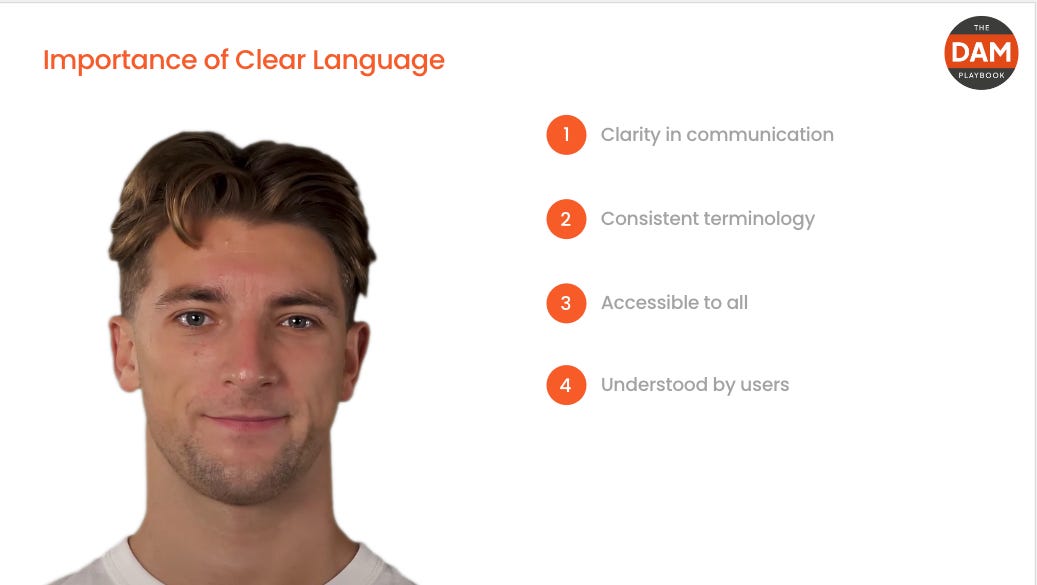Taxonomy in the realm of Digital Asset Management (DAM) is akin to the organizing principles of a library, but for digital content. It is a hierarchical classification that systematically organizes digital assets into categories and subcategories, making it possible to manage, discover, and utilize these assets with efficiency and precision. This structured classification system is not merely an administrative tool; it's a strategic asset that underpins the entire DAM ecosystem, ensuring that assets are not only stored but are also meaningful and accessible.
A DAM taxonomy goes beyond simple folder structures to incorporate layers of categories based on attributes such as content type, project, theme, or any other criteria that align with the organization's operational and strategic needs. It's a dynamic, often complex system that reflects the nuanced ways in which an organization uses and interacts with its digital assets.
Video Overview
Audio Overview
Benefits of a Robust DAM Taxonomy
The implementation of a well-structured taxonomy within a DAM system offers numerous benefits that extend across the organization:
Enhanced Navigation and Discoverability: A clear and logical taxonomy makes it easier for users to navigate the DAM system and quickly find the assets they need. This is particularly valuable in organizations with vast and varied digital asset libraries, where efficient search and retrieval are essential for productivity.
Consistent Tagging and Classification: With a standardized taxonomy, assets are consistently tagged and classified, reducing duplicates and ensuring that assets are stored and retrieved in a predictable manner. This consistency is critical for maintaining order within the DAM system and supports accurate search results.
Improved User Experience: A DAM system that is easy to use is one that gets used. A robust taxonomy contributes to a positive user experience by making the system intuitive and the assets within it easily accessible. This, in turn, drives higher adoption rates and more effective use of the DAM system.
Supports Scalability: As organizations grow and evolve, their DAM systems must adapt to accommodate new types of content, projects, and workflows. A well-planned taxonomy provides a flexible framework that can scale with these changes, allowing for the addition of new categories and subcategories without disrupting the existing system.
Facilitates Content Reuse: By making it easier to find and access existing assets, a robust taxonomy encourages the reuse of content, maximizing the value of each asset and reducing the need for unnecessary duplication of effort.
Enhances Collaboration: A common organizational language for digital assets, as provided by a taxonomy, enhances collaboration both within and across teams by ensuring everyone is speaking the same language when it comes to digital content.
Implementing a Strategic DAM Taxonomy
Developing a taxonomy that meets the strategic needs of an organization involves several key steps:
Engage Stakeholders: Include input from all user groups across the organization to ensure the taxonomy reflects the diverse needs and perspectives of those who will use the DAM system.
Analyze Content and Use Cases: Understand the types of assets in your DAM system and how they are used. This analysis will inform the structure of your taxonomy.
Define Hierarchical Structures: Organize categories and subcategories in a way that mirrors the workflow and asset retrieval patterns of your users.
Standardize Terminology: Ensure that the terms used in your taxonomy are clear, consistent, and understood by all users.
Test and Iterate: Implement the taxonomy with a pilot group of users, gather feedback, and be prepared to refine the structure to better meet user needs.
Conclusion
A strategically implemented DAM taxonomy is a powerful tool that enhances the usability, efficiency, and value of a DAM system. By providing a structured framework for organizing and accessing digital assets, a robust taxonomy not only improves day-to-day operations but also supports the broader strategic objectives of content management and digital asset utilization. As we continue to explore the foundations of effective DAM strategy, the importance of taxonomy as a critical component of this ecosystem becomes ever more apparent.





